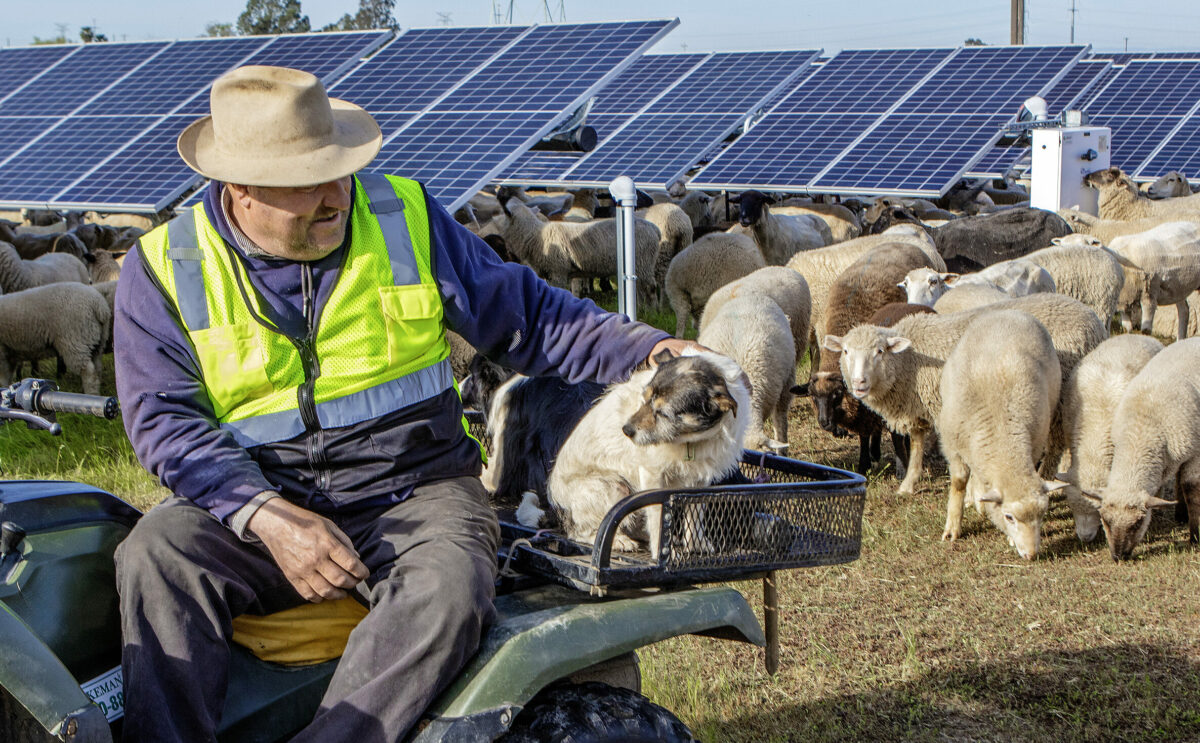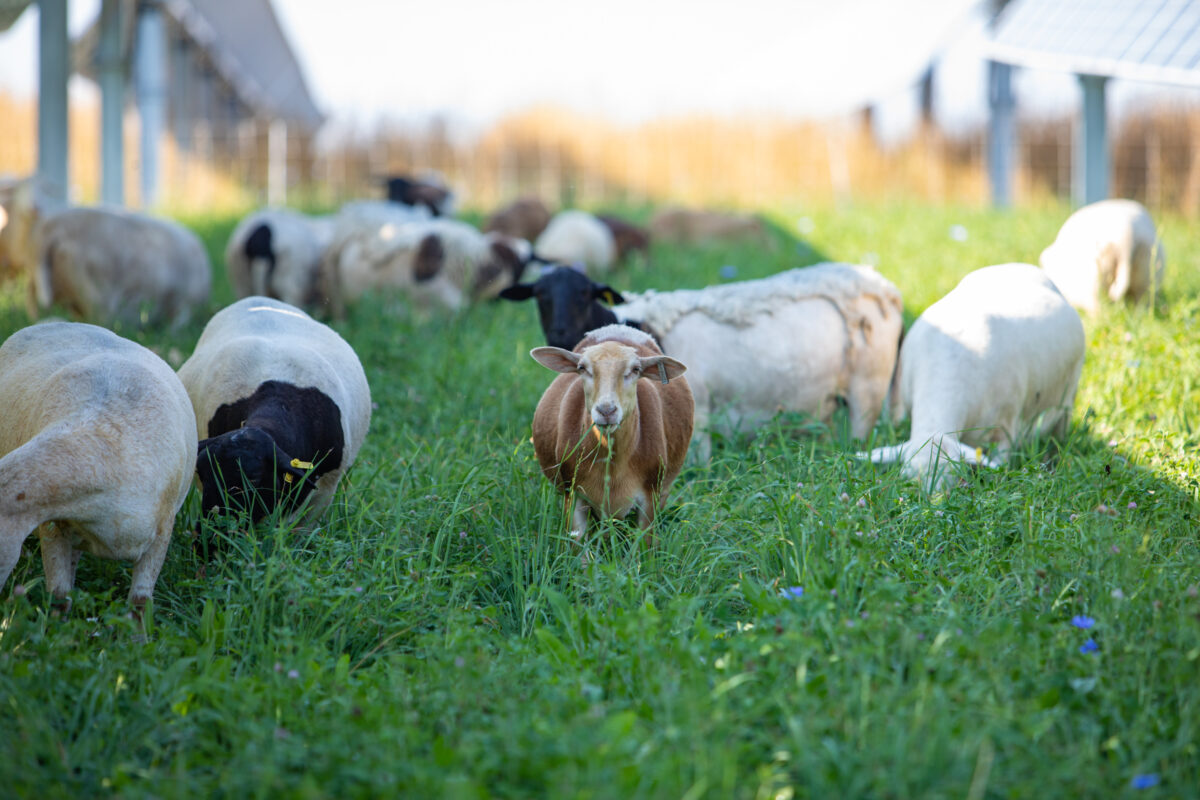Study: Solar and sheep create mutual benefits
Research at Lightsource bp Pennsylvania solar grazing site reports improvements to soil and pasture quality
Solar sheep grazing is a common form of agrivoltaics—the combination of farming and solar—deployed at many sites to control vegetation and integrate agriculture. Through careful planning and management, this practice also aims to improve soil quality and support biodiversity on the land.
Solar developers, farmers and scholars want to learn more about the ecology and economics of solar grazing so they can determine best practices for maximizing the benefits. A new study published in early 2025 shares promising findings, based on research conducted in part at Lightsource bp’s Nittany 1 project in Pennsylvania.
The key takeaways: Solar grazing made healthier soil on these Northeastern solar farms. Plus, the solar farms made a better environment for sheep, with healthier food to graze.
Solar farms built to boost biodiversity and support sheep
Lightsource bp’s Nittany Solar project, totalling 70MW across three sites, provides power to Penn State University under a 25-year power purchase agreement. Pennsylvania farmers graze sheep across all three sites.
As part of its commitment to boosting biodiversity, Lightsource bp seeded the sites with a mix specifically formulated by the American Solar Grazing Association (ASGA), in partnership with Ernst Conservation Seeds and Pollinator Service. The seed mix, aptly named “Fuzz and Buzz,” was designed to support sheep and pollinators at solar sites.
Lightsource bp first welcomed ASGA to Nittany 1 in 2022 as part of a two-year study on the impacts of solar sheep grazing for soil health, forage (what the sheep eat) and pasture conditions. Nittany 1 is one of 28 northeastern US solar grazing sites included in the research. The research was sponsored by the New York State Energy Research and Development Authority; American Farmland Trust led the technical aspects of the research design.
How does solar grazing impact soil, forage and pasture?
As sheep graze, they trample manure, urine, seeds and plant matter into the earth. The plant matter decomposes, and together with the animal waste, it fertilizes and rejuvenates the soil. Healthier soil grows healthier vegetation for the sheep to eat, and the cycle continues.
To measure these impacts, the ASGA researchers collected data on soil carbon, soil compaction, the variety of species, plant nutrition and other environmental factors before and after the 2022 and 2023 grazing seasons.
In March 2025, ASGA published three key findings:
- Solar grazing supports healthier soil:
This study is one of the first to publish soil testing methodology for operational solar farms. It found that the soil at solar grazing sites tends to contain more organic matter than at non-grazed solar farms and has a more neutral pH to support healthier plants. These results demonstrate the potential for solar grazing to improve soil health on solar farms.
Organic matter is a critical component of healthy and resilient soil. It helps retain moisture in the soil and reduces soil compaction. It stores carbon and other nutrients that help with plant growth, supporting a more stable ecosystem.
- Solar makes healthier food for sheep:
ASGA reports that vegetation harvested from beneath solar panels has a significantly higher protein content and better digestibility than vegetation from open spaces on the same sites. This is potentially attributable to the beneficial shading the panels provide.
- Solar grazing may improve pasture quality over time:
ASGA’s study is the first to use a U.S. Department of Agriculture scorecard to assess pasture at solar farms, looking at ten metrics of pasture health—plant diversity, soil compaction, livestock concentration and more. A field with a high “pasture condition score” (PCS) is a quality place for raising livestock.
Most metrics increased between 2022 and 2023, indicating improved site conditions. The overall PCS scores grew by 3%. While this change is not considered statistically significant by mathematical standards, ASGA states, “the increase in 2023 shows that grazing may have the potential to improve solar site pasture quality over time.”
ASGA’s findings are consistent with past studies on the environmental benefits of solar grazing—an emerging field of research in the United States. Lightsource bp is proud to provide site data for these important inquiries and to continue measuring the impacts of solar grazing at our operational sites over decades.
Learn more about solar grazing
15 Jul, 2024
How solar is revitalizing the US sheep industry
Video: California farmers discuss "the opportunity of a lifetime"
29 Nov, 2022
Video: Meet families raising sheep on solar farms
Solar grazing brings new hope to America's farmers
17 Aug, 2021
First Lightsource bp U.S. agrivoltaics program launches in Pennsylvania
Solar grazing is a win-win-win




